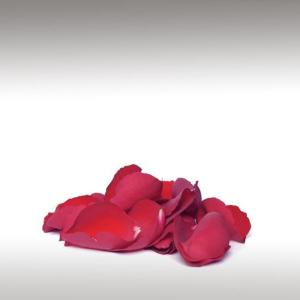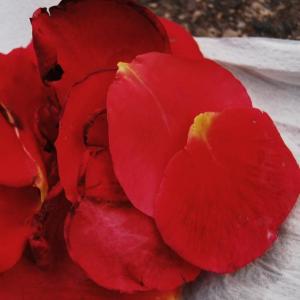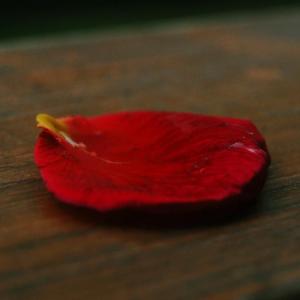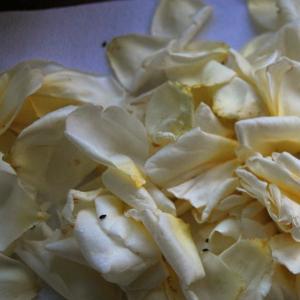
ROSE PETALS - INGREDIENTS

BASE / GENERAL DATA
Information submited: May 14, 2015 Modified: June 4, 2018 By: OperaDreamhouse
In our world we have many species of Roses, so information will be presented in general side. We must have in mind that we are talking about organic plant withoutpollution.
A rose is a woody perennial of the genus Rosa, within the family Rosaceae. There are over 100 species and thousands of cultivars. Flowers vary in size and shape and are usually large and showy, in colours ranging from white through yellows and reds. Most species are native to Asia, with smaller numbers native to Europe, North America, and northwest Africa. Species, cultivars and hybrids are all widely grown for their beauty and often are fragrant.
The long cultural history of the rose has led to it being used often as a symbol. Roses are a favored subject in art and appear in portraits, illustrations, on stamps, as ornaments or as architectural elements.
The name rose comes from French, itself from Latin Rosa, which was perhaps borrowed from Oscan.
Bulgaria produces about 70% of all rose oil in the world. Other significant producers are Morocco, Iran and Turkey. Harvesting of flowers is done by hand in the morning before sunrise and material is distilled the same day.
There are three main methods of extracting the oil from the Rose Petals material:
Steam distillation, which produces an oil called Rose Otto or attar of Roses.
Solvent extraction, which results in an oil called Rose absolute.
Supercritical carbon dioxide extraction, yielding an essential oil that may be marketed as either an absolute or as a CO2 extract.
Chemical structure:
The most common chemical compounds present in Rose oil are:
citronellol, geraniol, nerol, linalool, phenyl ethyl alcohol, farnesol, stearoptene, α - pinene, β - pinene, α - terpinene, limonene, p - cymene, camphene, β - caryophyllene, neral, citronellyl acetate, geranyl acetate, neryl acetate, eugenol, methyl eugenol, rose oxide, α - damascenone, β - damascenone, benzaldehyde, benzyl alcohol, rhodinyl acetate and phenyl ethyl formate.
The key flavor compounds that contribute to the distinctive scent of rose are beta - damascenone, beta - damascone, beta - ionone, and Rose oxide.
A rose is a woody perennial of the genus Rosa, within the family Rosaceae. There are over 100 species and thousands of cultivars. Flowers vary in size and shape and are usually large and showy, in colours ranging from white through yellows and reds. Most species are native to Asia, with smaller numbers native to Europe, North America, and northwest Africa. Species, cultivars and hybrids are all widely grown for their beauty and often are fragrant.
The long cultural history of the rose has led to it being used often as a symbol. Roses are a favored subject in art and appear in portraits, illustrations, on stamps, as ornaments or as architectural elements.
The name rose comes from French, itself from Latin Rosa, which was perhaps borrowed from Oscan.
Bulgaria produces about 70% of all rose oil in the world. Other significant producers are Morocco, Iran and Turkey. Harvesting of flowers is done by hand in the morning before sunrise and material is distilled the same day.
There are three main methods of extracting the oil from the Rose Petals material:
Steam distillation, which produces an oil called Rose Otto or attar of Roses.
Solvent extraction, which results in an oil called Rose absolute.
Supercritical carbon dioxide extraction, yielding an essential oil that may be marketed as either an absolute or as a CO2 extract.
Chemical structure:
The most common chemical compounds present in Rose oil are:
citronellol, geraniol, nerol, linalool, phenyl ethyl alcohol, farnesol, stearoptene, α - pinene, β - pinene, α - terpinene, limonene, p - cymene, camphene, β - caryophyllene, neral, citronellyl acetate, geranyl acetate, neryl acetate, eugenol, methyl eugenol, rose oxide, α - damascenone, β - damascenone, benzaldehyde, benzyl alcohol, rhodinyl acetate and phenyl ethyl formate.
The key flavor compounds that contribute to the distinctive scent of rose are beta - damascenone, beta - damascone, beta - ionone, and Rose oxide.

SPIRITUAL PRACTISES DATA

MEDICINE / HEALTH DATA
Information submited: May 19, 2015 Modified: June 4, 2018 By: OperaDreamhouse
Rose Petals are high in nutrients and especially high in polyphenols, an important antioxidant.
You can use wild or domesticated Rses. First, you want to be sure that they haven't been sprayed with harmful chemicals.
You can use wild or domesticated Rses. First, you want to be sure that they haven't been sprayed with harmful chemicals.
Secondly, your best bet is to use Roses that are aromatic. Roses that have no smell may not be as good for medicine or food, so use your nose to find the best Roses.

BEAUTY / COSMETICS DATA

FOOD / COOKING DATA
Information submited: May 14, 2015 Modified: June 4, 2018 By: OperaDreamhouse
The fruits of many species have significant levels of Vitamins and have been used as a food supplement.
Rose flowers are used as food, also usually as flavouring or to add their scent to food. Other minor uses include candied Rose Petals.
Rose hips are occasionally made into jam, jelly, marmalade, and soup or are brewed for tea, primarily for their high Vitamin C content. They are also pressed and filtered to make Rose hip syrup.
Rose Petals or flower buds are sometimes used to flavour ordinary tea, or combined with other herbs to make herbal teas.
In France there is much use of Rose syrup, most commonly made from an extract of Rose Petals. In the United States, this French Rose syrup is used to make rose scones and marshmallows.
Rose creams (Rose flavoured fondant covered in chocolate, often topped with a crystallised Rose Petal) are a traditional English confectionery widely available from numerous producers in the UK.
Rose flowers are used as food, also usually as flavouring or to add their scent to food. Other minor uses include candied Rose Petals.
Rose hips are occasionally made into jam, jelly, marmalade, and soup or are brewed for tea, primarily for their high Vitamin C content. They are also pressed and filtered to make Rose hip syrup.
Rose Petals or flower buds are sometimes used to flavour ordinary tea, or combined with other herbs to make herbal teas.
In France there is much use of Rose syrup, most commonly made from an extract of Rose Petals. In the United States, this French Rose syrup is used to make rose scones and marshmallows.
Rose creams (Rose flavoured fondant covered in chocolate, often topped with a crystallised Rose Petal) are a traditional English confectionery widely available from numerous producers in the UK.
COMMENTS
No comments.
Newest mixtures containing Rose Petals:

Fresh crushed rose petals facial mask
September 9, 2015

Home made rose petal oil
May 13, 2015





